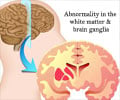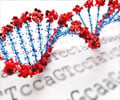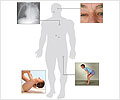Researchers have found that co-infection of two genetic diseases Thalassemia and Sickle Cell anemia make the patients susceptible to malarial parasite infection. It is known that patients with Thalassemia and Patients with Sickle Cell anemia were resistant to malaria infection. But now researchers have found that co-infection of both the genetic diseases make them susceptible to malaria. The findings of the research were presented in the Fourth Multilateral Initiative on Malaria Pan-African Malaria Conference in Yaoundé, Cameroon.
"We've looked at these traits individually and we expected that if people had both of them, they would be really protected," said Tom Williams, a Wellcome Senior Research Fellow at the Kenya Medical Research Institute (KEMRI) and the study's lead author. "But it turns out that when you start combining the two, you can lose the effect of both."With malaria researchers eager to find and understand more about genetic traits that confer protection against malaria, the study--recently published in Nature Genetics--shows how challenging it can be to pinpoint protective genes and, moreover, predict how they might be influenced by other traits. (Thursday, 11:50 a.m., Iroko Hall, Parallel Session 23, Presentation 148)
"This is an important finding in part because a huge effort is being poured into malaria genomics and the search for genetic associations with malaria," Williams said. "Our study shows that it can be very complicated to turn up genetic associations and properly understand them. If one trait can interfere with the effects of another, you may miss an association where one truly exists. Conversely, you may find a trait that seems to provide protection but not see how other traits could alter the effect."
Nonetheless, Williams said the finding--which involved chronicling the genetic and malarial status of more than 2,000 children, most starting at birth--can help scientists learn more about discrete, if complex, biological mechanisms at work in naturally acquired immunity.
For several years Williams' research has probed how certain genetic factors provide Africans with a degree of natural protection against malaria. A key focus of his work has been the underlying effects of the sickle cell trait, which became relatively common in humans as an evolutionary, protective genetic response to thousands of years of exposure to malaria.
Individuals with sickle cell trait inherit one normal hemoglobin gene from one parent and a sickle hemoglobin gene from another. (They don't have sickle disease, which occurs when someone inherits two copies of the sickle gene, one from each parent.) Studies have shown that when children with the sickle trait are exposed to malaria, they suffer far fewer parasites and are 90 percent less likely to be hospitalized by a malaria infection than those without the trait. The protective effect increases with age.
Advertisement
The degree to which the interaction between the traits dilutes their protective effect depends on the type of alpha thalassemia gene involved. (There are two sub-varieties.) But Williams said when the sickle trait exists alongside the type found routinely in malaria endemic regions of Africa, "all the good work of these genes is lost and you end up with the same degree of risk as someone who has neither trait."
Advertisement
"This is another example of the incredible new insights that emerge from supporting malaria research in Africa," said Andreas Heddini, the MIM Secretariat coordinator. "There are many scientists interested in malaria genetics. But as this study shows, findings that come only from the laboratory will be limited unless they are supported by strong evidence from population studies in Africa."
Interest in fighting malaria by studying particular genetic factors related to the disease has increased over the past few years following the sequencing of the genomes of the most deadly form of malaria and its mosquito carrier.
For example, thanks to the genome sequence, researchers now have in their hands powerful "gene chips" that contain the entire malaria genome and can be used to quickly screen parasites for evidence of virulence or drug resistance, or to uncover how they have evolved to avoid human immune responses. And with the sequence publicly available, leading genomics experts who had done little with malaria are now focusing their talent and technology on the disease.
"But resources and personnel are limited," said Carucci. "To maintain momentum, a large-scale effort must be undertaken to distill from the genome data critical information that will give researchers what they need to select those new targets for drugs and vaccines that are most likely to yield success."
Source: Eurekalert.











